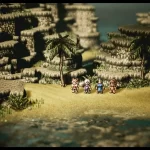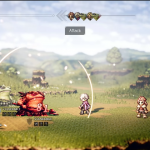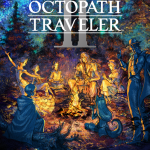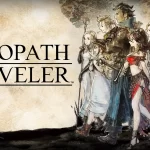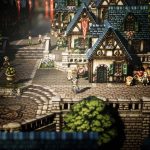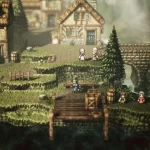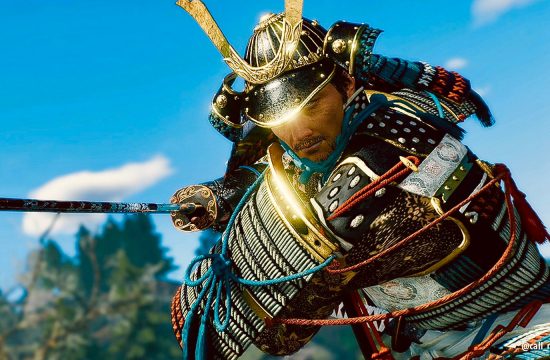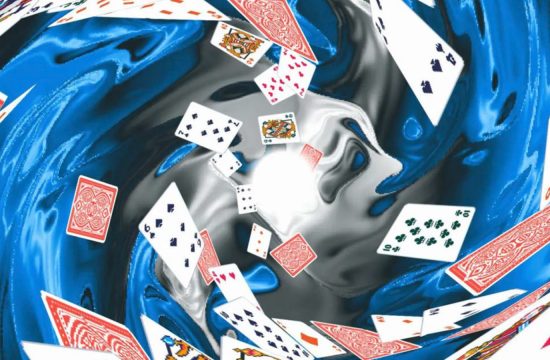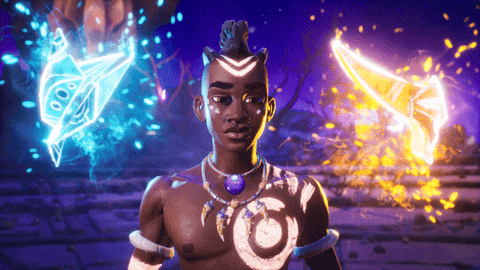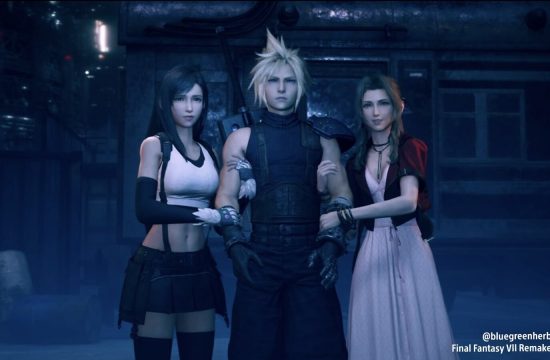
A year after the Switch released, Team Asano—who made its name on the Bravely Default games on 3DS—released Octopath Traveler for the Switch. The fascinating HD-2D art style immediately grabbed people’s attention, while the clever implementation of classic JRPG gameplay quickly stole the hearts of many. Now that it’s been a few more years and a couple more HD-2D titles have gone through production, the team opted to take another crack at the original formula with Octopath Traveler II. We’re happy to report that this is every bit the worthy sequel you hoped it would be, Octopath Traveler II quickly makes a case for itself as one of the very best JRPGs on Switch.
The narrative of this sequel follows in the footsteps of the original, centering around the personal stories of eight people in largely disconnected narratives. Temenos, for example, is an incredibly condescending and sassy cleric who has to solve the mystery of a string of mysterious murders related to the Church of Sacred Flame. Agnea the Dancer, on the other hand, is a small-town country bumpkin with a heart of gold who sets out on a journey to prove her skills and become a famous dancing star like her mother was. Some of the stories here feature quite heavy themes while others are equally lighthearted, but all of them are compelling in their own way. Importantly, these stories still feature their starring party member in an isolated role; the other party members don’t get involved in the plot because you can technically go through any character’s entire storyline without ever adding anyone else to the party.

The stories here feel a little more subversive and interesting than their equivalents in the first Octopath. Therion the Thief, for example, was played as the stereotypically aloof scoundrel who follows their own code, while Throné the Thief is a victim of childhood trauma who is trying to escape the cycle of violence and fear that she’s lived in for most of her life. Though those who were hoping for a more centralized narrative will be left wanting, the collection of character-driven stories here provides a compelling anthology of adventures and drama in the new land of Solistia.
And still, it’s not like the developers didn’t address criticism from some of the fan base over the story in the original. Most importantly, characters can now participate in Crossed Paths storylines, where certain party members will join up for extended side storylines that add more depth to their backstories while giving us plenty of time to see how their personalities play off each other directly. These Crossed Paths are written in a similar way to the main quests and often take a few chapters for each storyline to resolve, which has the double effect of giving you more content to see beyond each character’s main questline while also letting you see party members directly interacting and working together to achieve a common goal.

The structure of chapters is switched up on occasion, too. For example, Partitio has a series of ‘Scent of Commerce’ quests that can be completed whenever which don’t fall within the traditional four-chapter arc. Meanwhile, other characters will have storylines that branch, such as how Throné’s chapter 2 splits into two routes that each are followed up by their own chapter 3. We appreciated this enhanced focus on player agency, as you can often choose to follow the plot threads that you’re most interested in, not to mention that it feels like the scope of the story is wider when entire chapters can be dedicated to specific events and plot devices.
Combat in Octopath Traveler II brings back the same excellent turn-based system, which adds plenty of extra strategic options to basic turn-based combat. Enemies each have various weaknesses to certain magic or weapon types and hitting them with a matching attack or skill will both do more damage and reduce their shield points by at least one. If their shield points drop to zero that enemy “Breaks”, which takes away their current and next turn while making them considerably more vulnerable to all damage types. Unleashing maximum damage requires more than breaking, however, as you also have to balance when to spend your Boost points. Each character gains one BP per turn and can choose to spend up to three when they take an action, which has the effect of either notably boosting the damage output, extending the buff duration, healing more health, etc.

Boost and Break already add plenty of depth to combat, but Octopath Traveler II has added an additional layer now with the new Latent Power system. This adds a custom ‘Limit Break’ to each of your characters that slowly fills a gauge as you take and receive damage. Once full, you can trigger the Latent Ability to cause a powerful effect to take place, like giving your character an immediate free turn or causing a single target spell to affect all targets. Latent Powers are a little more situational in use than Boost points, but act similarly in how they can allow you to massively turn the tides of a fight if you pick your moment well. More importantly, they give each character a little more of a unique edge to consider when team-building; it may well be that anybody can take on the Scholar class, but only Osvald can cause multi-target spells to hit one target for bigger damage.
Take all the above mechanics together, and you have an impressively dynamic and constantly interesting battle system that goes above and beyond what most turn-based RPGs shoot for. Boost points, for example, can be used to either chop away at enemies’ shield points faster or they can be stored so you can let ‘er rip a few turns later once you break an enemy. And while it may seem to be most optimal to break every enemy as fast as you can, sometimes it’s better to hold them at one shield point and then knock ‘em over when they’re winding up a big special attack. There are many ways you can choose to approach the combat system and given how suddenly things can change after even one turn, Octopath Traveler II constantly keeps you guessing and on the edge of your seat. This is one of the finest turn-based combat systems we’ve ever seen in a JRPG; we applaud Team Asano for its efforts here.

Outside of combat, character growth takes a similar approach to favoring player choice, as you shape the niches and roles that you want each member of your team to fill. Every character starts with a given class, such as the Scholar or the Merchant, and these dictate the character’s stats, weapons, and skills. As you defeat enemies, you’ll accrue Job Points which can then be spent to unlock another skill from a short list for that character’s equipped class, both expanding their combat effectiveness and granting the character a new passive skill that they can equip.
Things get much more interesting when you start to unlock secondary classes. With these, you can not only massively expand a character’s skillset and boost their stats, but you can give them access to passive skills that synergize well with their abilities. For example, there’s an Apothecary passive ability that restores 30% of a character’s HP and SP after the completion of a battle, which pairs well with a Scholar who burns through a lot of SP when casting spells. Unlocked passive skills stay permanently with a character even after you’ve switched to another secondary class, which incentivizes you to keep experimenting with different combinations as you power up your party.
New to Octopath Traveler II is the guild system, which is used to unlock access to secondary classes. Every guild you find will give you a license which lets you equip the new subclass to one character in your party at a time, but you can fulfill quests for the guild to get more licenses so more characters can have that subclass at the same time. These can ask you to do things like collecting a certain amount of rare items from enemy drops, or reaching the end of an optional dungeon beyond town that hosts a secret boss. We appreciated this expanded take on acquiring new classes, as it feels like you’re really accomplishing something meaningful now that you have to work for it to get another license.

Plus, the shrine system from the previous entry is still present, just in a modified way. Scattered across the world are various shrines you can find for each class, and if you have the character with that base class in your party, they’ll receive a powerful EX Skill that’s exclusive to them. These each usually carry a high SP cost, but are equally capable of tearing foes a new one. Unlocking a character’s EX Skills can further help to define their niche, too, as it gives each of them value that no other party member can bring.
When exploring the overworld, there’s now a new day and night system that modifies the environment in subtle ways. You can toggle between day and night at will, while the enemies that attack you and the NPCs you can interact with will change. This ensures that grinding goes a little smoother due to the enemies at night being stronger and giving out more experience, while the switched NPCs help to make each town feel less static and artificial. Some characters also have passive abilities that grant certain enemy debuffs or character buffs depending on the time, which can add an additional element to consider before challenging a tough boss.
The day-night system also affects Path Actions, which are the unique skills each character can use to influence or interact with NPCs. Each character has a day action and a night action, such as how Osvald can scrutinize people in the day to find the locations of secret treasures hidden around town and mug them at night to take their stuff. We enjoyed the kind of morality system at play here, as you can be as respectable or comically evil as you want. Agnea, for example, can entreat that someone give her the items they’re carrying, or you can just have Throné steal from them or have Osvald mug them.

Visually, Octopath Traveler II feels like a step up from the original and manages to consistently impress as the hours roll by and you encounter new locales and enemies. Whether you’re exploring the busy streets of New Delta or the lush tropical ruins of Toto’haha, each biome feels notably distinct from the next and a little more creative than the somewhat unimaginative environments in the first Octopath. Small details like the slow-moving shadows of clouds changing the lighting or lingering motes of dust hanging in the air help to give the graphics a more realistic touch, while the spritework (especially for the bosses!) gives everything that retro appeal. Visuals become a touch less sharp in handheld mode, but that’s to be expected. We also appreciated the more dynamic camera in this entry, which can take different angles in battle or certain cutscenes to highlight big moments and frame events in a new way.
The visuals are accompanied by an absolutely stellar soundtrack from Yasunori Nishiki which does an incredible job of setting a palpable mood. Whether it be the goofy, bouncy tune that plays when a rare Cait or Puffer enemy shows up in a random battle or the creepy, mysterious track that plays when you first set foot in the abandoned village, there’s a wide variety of excellent orchestral tracks here to suit every mood and to underline the important emotional moments of each story. It’s tough to definitively say whether this soundtrack outdoes the performance of the first game, but it is at the very least just as good, and we’d be inclined to say that it sounds just a touch better.
Voice acting is another highlight here, especially given that all major cutscenes and interactions are now fully voiced. What we appreciate most is the nuance on display; Agnea, for example, has trained herself to talk like ‘city people’ due to her career aspirations, but in moments where she gets really excited or frustrated, you can hear her cute southern drawl slipping back in. Also, the characters are more vocal in battle now, often congratulating each other on a well-placed attack or expressing concern when someone’s health dips to dangerous levels. This interaction helps to further build the idea of the party being more of a team, and the call-outs feel natural without being needlessly overdone.

The only complaint that we can reasonably make against Octopath Traveler II, if it’s even a complaint at all, is that it doesn’t do nearly enough to establish itself as a distinct successor. It feels bigger, bolder, and more polished than its predecessor, but those who didn’t like what the first game was going for likely won’t like this entry either. That’s not necessarily a bad thing this time around, but it is something to be mindful of, and—should there be an Octopath Traveler III someday—we hope that Team Asano will feel more ambitious in evolving the series further beyond its roots.



